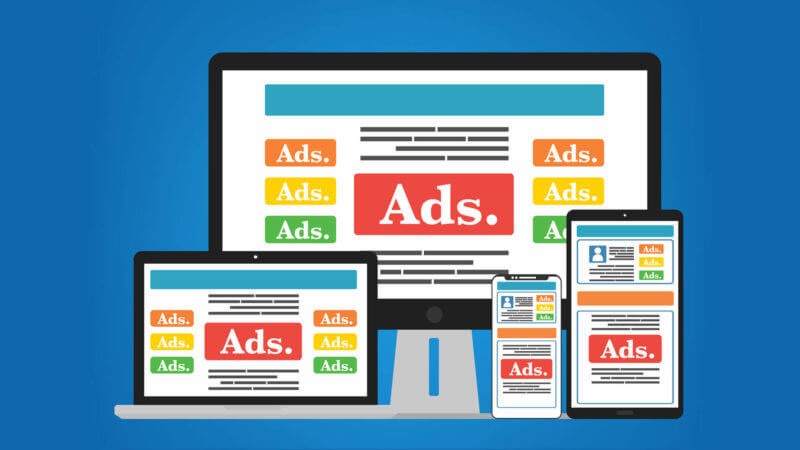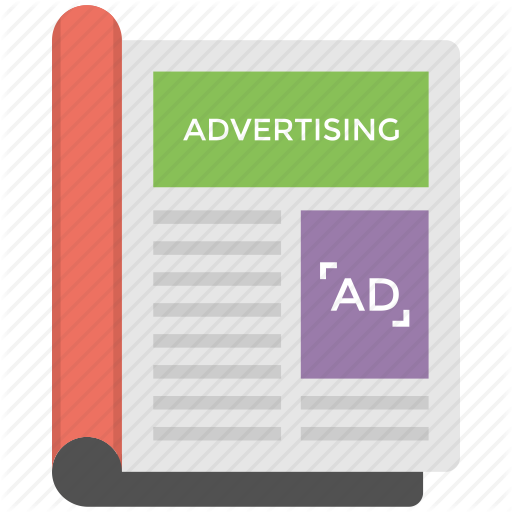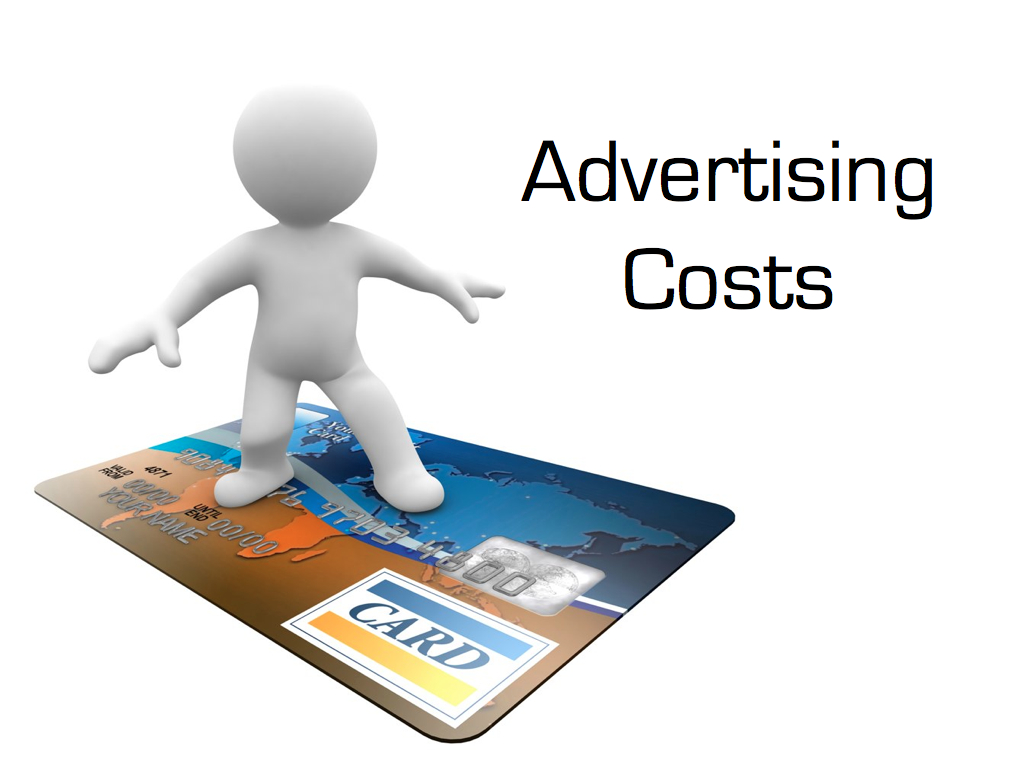The purpose of any advertisement is to express a message, with a view to induce a positive customer action. For effective communication, proper mediums must be put to use.The channel used by an advertiser to communicate the desired message to the target audience is known as the “Advertising Media”.
Advertising Media, can hence be defined as the channel, vehicle or device employed by a business to communicate its promotional content to a larger audience. Traditionally, not many mediums for advertising were available. However due to advancements in communication technology, a number of modern day mediums are also available for advertising.
Let us discuss these advertising mediums in detail, with special reference to their merits and demerits :
- Newspapers:
Newspapers are the most traditional mediums for advertising employed by all organisations, big or small. Newspaper reading is a common habit all over the world to keep updated with all the latest news. Newspapers continue to be the most reliable source of information which educates and entertains as well.
Advantages of Newspaper Advertising :
- Newspapers are cheap and can be afforded by most people all over the world, ensuring greater reach and readership.
- There is high flexibility in advertising as alterations can be made to the advertisement message regarding the ad size or placement any time before publishing.
- Length of the message need not be cut short and the advertiser can communicate as much of the story he desires.
- Continuity in advertisement can be maintained to create an impact since newspapers are circulated daily.
Disadvantages of Newspaper Advertising :
- Newspapers have a short life and are usually discarded once read.
- The advertisements in newspapers are of low quality due to the usage of low quality paper and colour.
- Newspapers cannot be read by illiterates and hence do no good for them.
- Newspaper advertisements have a tendency of being overlooked by readers while reading the issue.
- A lot of advertisements, including competing advertisements, when printed on the same page create clutter.
- Competitors may instantly react to the advertisement as newspaper is a highly visible medium for advertising.
- Magazines :
Magazines are an excellent medium for advertising on account of the high quality prints and papers used. Magazines are published for the general public and many special magazines for specific audiences are also published. They are available as weekly, fortnightly or monthly issues and are a more focused alternative to newspaper advertising.
Advantages of Magazine Advertising :
- The high quality paper used ensures better colour reproduction and good quality advertisements. Magazines are usually colourful, giving the advertised product a better representation.
- Life of magazine advertisements is usually longer as magazines can be preserved for a longer duration.
- Targeting is made easy as specified magazines for specific categories are available for the products to be advertised depending upon the target audience.
- Magazine advertisements are read when at leisure, hence have a greater chance of being read and remembered.
Disadvantages of Magazine Advertising :
- It is costly as space and layout costs are higher, especially in comparison to newspapers.
- There is less flexibility in terms of format and ad placement and long lead times are involved in planning the advertising content weeks or months in advance.
- Circulation of magazines is relatively limited compared to circulation of newspapers. Also, the frequency of the advertisement is limited as magazines are available once in a week, fortnight or month basis.
- Television :
Television is the most rapidly growing medium for advertising due to the expansion of electronic media and cable networks. Television is available to most of the people in developing nations today and the audio visual experience of such advertisements create a lasting effect on the minds of the audience through visuals, sound and motion.
Advantages of Television Advertising :
- Television advertisements are extremely attractive and appeal through both the eyes and the ears of the audiences on account of the audio visual elements associated with such advertisements.
- Such advertisements allow reaching out to a large audience in a short time, on a national or regional level.
- It is possible to demonstrate the use of the products advertised and elaborate details can be communicated.
- There are no limitations on the size of such advertisements, normally viewable full screen.
Disadvantages of Television Advertising :
- Television is an expensive medium of advertising in terms of creative, production as well as broadcast costs
- Creation of such advertisements is a time consuming process
- High clutter is involved. Too many advertisements during the commercial breaks between television programs make the advertisement less effective.
- Length of television advertisements is limited to usually 30 seconds, and the message too has to be limited to match the duration.
- Audience selectivity is a concern as the advertisements are viewed by
- Radio :
Radio advertising is an immensely strong method for advertising as radio is a widely used mode of entertainment. Traditionally played on radio sets, radio is currently available on every mobile phone and can be accessed even without internet, making it a popular medium for people while driving or travelling. Ardent followers of specific radio stations or shows make it a point to tune in on time and radio advertisements are heard by a large number of people.
Advantages of Radio Advertising :
- Radio advertisements enjoy mass coverage as they are listened to by every kind of listener. They cover numerous people with varying tastes and hence has an effective appeal
- Such advertising campaigns can ensure reaching out to the illiterate people as well.
- The cost of advertising on radio is lower as compared to television and other modern means of advertising.
- Selectivity is possible as advertisements may be included in different programmes for different types of people
- Radio advertisements can be easily edited unlike television and hoardings, which require time to alter.
- Advertisements can be played in different languages on regional radio stations.
Disadvantages of Radio Advertising :
- Radio advertisements lack a visual appeal and may be less effective compared to mediums having a visual impact. Products advertised this way cannot be demonstrated.
- Such advertisements are timed, and there is a possibility of missing them completely or catching them in between the ad run.
- People might forget what they hear over the radio.
- Advertisers need to increase the frequency of such advertisements to ensure adequate action from the audiences. The rates for different timings are generally different with limited time available..
- Film Advertising :
Film advertising involves playing of short advertisements in cinema halls before a movie begins and even during intermission. Big organisations execute their advertising campaigns by creating such short motion films and distributing them to cinema houses for being played. Cinema advertisements are remembered by the audiences for a long time.
Advantages of Film Advertising :
- Film advertising is effective as it combines audio, video and motion graphics to create an impact.
- The impact of the message is greater due to less distraction when people come to halls to specifically watch movies.
- There is selectivity in cinema advertisements. The advertiser can advertise his products with a certain audience on the basis of the region and the show.
- There is less clutter in cinema halls and the booking time for cinema advertisements is also less.
Disadvantages of Film Advertising :
- Creating cinema ads is expensive and is ideally used by big organisations only.
- Cinema advertisements is a time consuming process and it is not easy to make changes to the message.
- They have limited effectiveness as very few people are in the cinema halls when such advertisements are played – before the movie begins and during the intermission.
- These ads can get ignored when played while people talk to each other.
- The message is limited to only those visiting cinema halls.
- Outdoor Advertising :
The idea behind outdoor advertising is to catch the attention of people on busy streets and other public places. Also known as “Indirect Advertising”, outdoor advertising includes posters, billboard displays, transit displays, sky writing and electronic displays.
Advantages of Outdoor Advertising :
- Outdoor advertisements enjoy flexibility as the same message can be modified for different regions or localities, in different languages.
- It is less costly compared to television, radio and magazine advertisements.
- Outdoor advertisements enjoy a longer life, until they are removed.
- Such advertisements easily catch the attention of people on busy roads.
Disadvantages of Outdoor Advertising :
- There is a limited audience who get exposed to outdoor advertisements.
- Outdoor advertisements have a low retention value as people cannot dedicate special time to go through them.
- Such advertisements may distract the passersby, leading to accidents.
- It is difficult to target specific audiences through outdoor advertising, as the people belonging to all age groups, gender and economic background are exposed to the same message, and the same may not be useful for everyone alike.
- Such advertisements cannot carry lengthy messages and need to be concise.
- Direct Mail :
Commonly identified as “Direct Response Marketing”, direct mail is a technique wherein various forms of printed advertising messages are sent directly to the potential buyers by post. Direct mail includes product literature to provide ordering opportunities in the form of catalogues, booklets, postcards, sales letters, package inserts, store publications and brochures.

Advantages of Direct Mail :
- It is easy for the advertiser to clearly define its target market.
- The advertiser can create and deliver the message effectively in the absence of competition or clutter.
- Direct mails involve an element of personal touch as messages are directly addressed to the receiver. Personalised messages have a tendency to generate a positive impression.
- Advertisers enjoy high flexibility as the messages can be easily modified whenever desired, as the total control on the presentation of the advertisement vests in the advertiser.
- It is easy to measure the effectiveness of the response to the advertisement.
Disadvantages of Direct Mail :
- It is expensive as the cost of individual communication is higher compared to messages communicated through newspaper advertising.
- Long lead time is required to creatively prepare, publish and mail the messages.
- It involves additional cost in using professional services of copywriters, photographers, printers, designers, etc.
- People tend to ignore most of these messages as junk mails and immediately discard them without even going through them.
- Internet Advertising :
The most modernised medium for advertising, internet advertising is an interactive medium to spread the message online. The popularity of the internet as a means for education and entertainment has created the market for online advertising. Websites take fees from advertisers for sharing space on their web pages.

Advantages of Internet Advertising :
- Internet advertising incurs less expenses compared to other means of advertising.
- Online advertisements can be made interactive to facilitate a two way communication with the audience.
- High flexibility of giving personal touch exists and the message can be dramatised.
- Online advertisements are appealing to the viewers due to the visuals used. Some advertisements even contain video and high quality graphics.
Disadvantages of Internet Advertising
- Internet advertising has limited reach in developing countries as many people do not have access to the internet.
- Being a relatively new medium for advertising, its effectiveness is yet to be established.







